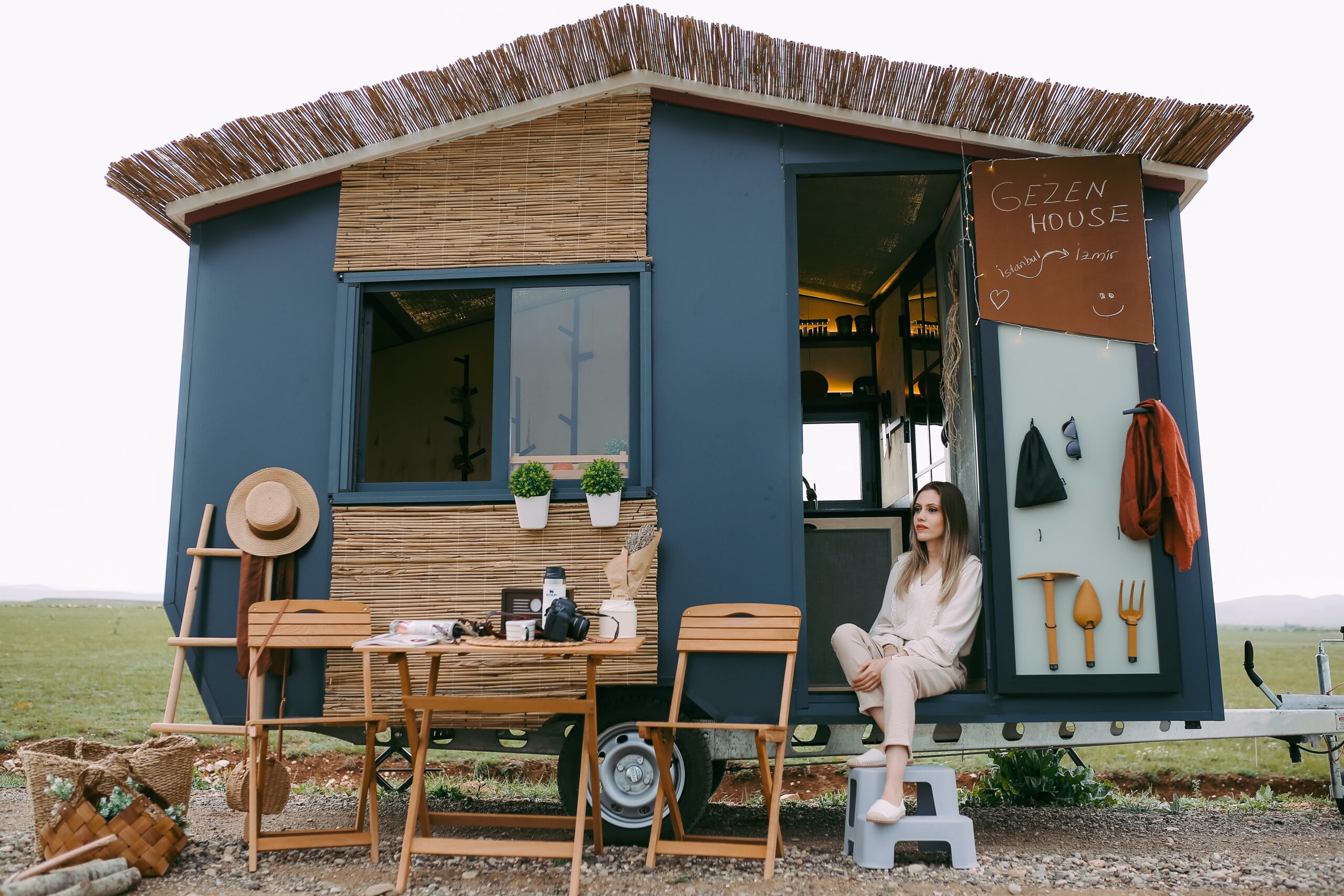
The Big Impact of Going Tiny: An Exploration of Tiny Home Challenges and Rewards
The tiny house movement is a modern architectural and social campaign that advocates for living in small homes. With their compact and minimalist design, these structures challenge traditional perspectives on housing by promoting the maximization of functionality and efficiency, often within just 100 to 400 square feet of space. While tiny homes are praised for their affordability and environmental friendliness, they present their own unique hardships. This article delves into the housing and financial challenges tied to tiny homes, as well as their advantages and drawbacks.
Defining Tiny Homes
Tiny homes are essentially miniature, fully functional houses. They come in various forms, from mobile homes that can be towed behind vehicles, to static micro homes located on pieces of land. These homes have the capability to contain all the necessary facilities a traditional home does – a bedroom, kitchen, bathroom, and living space – but on a significantly smaller scale.
The Housing and Financial Hardships
━Housing Hardships
Navigating building codes and zoning laws represents a significant challenge for tiny homeowners. These laws, meant to ensure the safety and standardization of housing, can often inadvertently create obstacles for the tiny home movement.
Zoning Regulations : Many areas have zoning laws that specify minimum square footage for new constructions, effectively making it illegal to build tiny homes on residential plots. Some areas also have specific restrictions on dwelling types, disallowing non-traditional forms of housing, including tiny homes, especially in urban zones.
RV Classification : Tiny homes built on wheels are often classified as recreational vehicles (RVs) or trailers. Many jurisdictions have laws against living full-time in such vehicles, which can make finding a permanent parking spot for your tiny home difficult.
Access to Utilities : Depending on the location, tiny homes may face challenges in accessing public utilities. Since tiny homes may not be recognized as full-fledged residences, connecting to municipal water and sewage systems, electricity grids, and other services can be challenging. Many tiny home owners are forced to use off-grid solutions such as composting toilets, solar panels, and rainwater collection systems, which come with their own set of complications and costs.
━Financial Hardships
While tiny homes may be less expensive than traditional homes overall, they come with their own unique set of financial difficulties.
Financing : Traditional financial institutions often struggle with how to handle tiny homes. Since they don’t fit the standard model of a house, banks are often hesitant to give out loans or mortgages for them. This can make it difficult for potential tiny homeowners to secure the necessary funds. However, some institutions are starting to offer tiny home loans, but they’re not as widespread as traditional home loans.
Depreciation : Unlike traditional homes, which are usually expected to appreciate in value over time, tiny homes often depreciate, much like vehicles or RVs. This can pose a financial risk for those who see their home as an investment.
Construction and Maintenance Costs : While the overall cost of a tiny home may be lower, the cost per square foot can be higher due to the need for customized, space-saving designs and multi-purpose fixtures and appliances. Moreover, ongoing maintenance, including any necessary repairs or replacements, can be expensive, especially for tiny homes that incorporate high-tech or specialized components.
Insurance : Insuring tiny homes can be tricky and more expensive than traditional homes. They may not fit into traditional homeowners insurance categories due to their unique characteristics such as mobility, custom builds, and off-grid capabilities.
Property Taxes and Fees : While typically less than those of larger homes, tiny homeowners still face property taxes which can be a financial burden. In addition, if the home is located in a tiny house community, there might be monthly or annual fees to consider.
While these challenges can seem daunting, with careful planning, research, and consultation with experts in the tiny home community, they can be navigated successfully. Each challenge also represents an opportunity for societal structures and norms to evolve and adapt in response to the growing popularity of this housing movement.
The Pros & Cons
━Pros of Tiny Homes
Cost-Efficiency : One of the most appealing benefits of tiny homes is their relative affordability compared to traditional housing. The initial investment cost for construction or purchase of a tiny home is typically much less. Moreover, their reduced size leads to lower ongoing expenses in terms of utilities, maintenance, and taxes.
Environmental Sustainability : Tiny homes have a smaller environmental footprint. They require fewer materials to build and less energy to heat and cool, leading to reduced carbon emissions. Many tiny homes also incorporate eco-friendly technologies such as solar panels and composting toilets, contributing further to sustainability.
Simplified Living : Tiny homes promote a minimalist lifestyle. With less space for possessions, tiny home residents often report a greater focus on experiences rather than material items. This can lead to increased contentment and life satisfaction.
Mobility : For tiny homes built on wheels, there’s the added advantage of mobility. Owners can easily move their homes as desired, offering a sense of freedom and adaptability traditional homes don’t provide.
━Cons of Tiny Homes
Limited Space : The most apparent drawback is the lack of space. Tiny homes require efficient use of every square inch, which can lead to a lack of privacy and comfort, particularly for families or those who entertain frequently. The lack of storage space also means continual decluttering and organization are necessary.
Legal and Regulatory Challenges : As mentioned earlier, tiny homes often face significant legal hurdles. Strict zoning laws, building codes, and difficulties accessing utilities can make tiny home living logistically challenging and even illegal in certain areas.
Financing and Investment Considerations : Tiny homes often don’t appreciate in value like traditional homes do. This lack of capital appreciation, coupled with difficulties securing financing for purchase or construction, can deter potential buyers.
Social Adaptation : Living in a tiny home can require a significant social adjustment. Given the close quarters, inhabitants must feel comfortable living in intimate proximity. Hosting social gatherings may also be challenging given space constraints.
Resources for Tiny Home Hardships
While tiny homes offer a promising solution to many of the challenges associated with traditional housing, they come with their own unique set of drawbacks. As the tiny house movement continues to grow and evolve, potential tiny homeowners must carefully consider these pros and cons before deciding if this unique lifestyle is a good fit for them.
There are several resources available to assist people interested in the tiny home lifestyle or those who are already living in tiny homes and experiencing hardships. These resources can help navigate through the complex legal, financial, and lifestyle challenges that tiny living can bring.
Tiny House Building Companies : Many companies, such as Tumbleweed Tiny House Company and Tiny Home Builders, offer advice and support on building and designing tiny homes, navigating regulations, and securing financing.
Tiny House Communities and Social Networks : Online communities such as Tiny House Community, Tiny House People on Facebook, and Reddit’s Tiny Houses subreddit can provide support and insights from people who have already gone through the process of transitioning to tiny living.
Consultation Services : Consultants specializing in tiny homes can provide personalized advice and guidance. They help you understand local regulations, find suitable land, design your home, and more. Some also offer workshops and online courses.
Legal Resources : Some organizations like the American Tiny House Association provide resources to understand and navigate zoning laws and building codes related to tiny homes. They also advocate for changes to make it easier for people to legally live in tiny homes.
Nonprofit Organizations : Some nonprofit organizations offer assistance with building or finding affordable tiny homes. Habitat for Humanity, for instance, has sometimes built tiny houses as part of its mission to provide affordable housing.
Books and Online Resources : Books such as “The Big Tiny: A Built-It-Myself Memoir” by Dee Williams, “Tiny House Living: Ideas for Building and Living Well in Less than 400 Square Feet” by Ryan Mitchell, and numerous blogs, websites, and YouTube channels provide valuable insights and guidance on living in a tiny home.
Financial Institutions : A few credit unions, banks, and other financial institutions are beginning to recognize the tiny home movement and are offering loans specifically designed for tiny houses. LightStream, for example, provides loans for tiny homes.
Remember, navigating the tiny home phenomenon may seem daunting at first, but with the right resources and guidance, it can be a fulfilling and rewarding experience.
Conclusion
Tiny homes represent a fascinating alternative to traditional housing, one that requires careful consideration. Prospective homeowners must weigh the affordability and environmental benefits against the legal, financial, and lifestyle challenges inherent to this unique mode of living. By understanding these complexities, individuals can make informed decisions about whether the tiny home lifestyle is the right fit for them. Despite their size, tiny homes have a significant role in discussions about the future of housing, sustainability, and our relationship with the spaces we inhabit.

Discover the Hardship Center, a valuable resource for understanding financial hardship programs available to the public. Learn how professional assistance can help maximize the benefits of these programs and make a significant difference in consumers’ lives.






